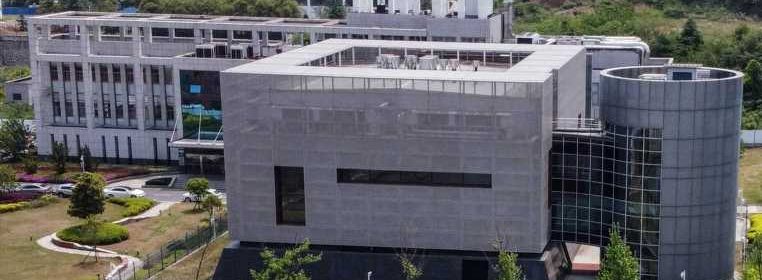US confirms it deleted info on early Wuhan Covid samples from database at request of Chinese officials

RECORDS of early Covid-19 cases in Wuhan were scrubbed from a US database at the request of Chinese scientists,officials have confirmed.
A team of academics from the coronavirus epicentre in Hube, Central China, submitted sequences of the virus that causes the disease to a US-based archive in March 2020.
But three months later they asked for those sequences to be removed and the data were deleted, the US National Institutes of Health (NIH) said.
This confirms the results of an investigation by biologist Jesse Bloom.
It also comes after a shocking new study that China deleted Covid data to cover up 'Patient Zero' amid growing suspicions globally that the virus leaked from a lab.
Explosive new claims have emerged that China deleted information about the origins of the virus that could have provided vital clues.
NIH said in a statement: “Submitting investigators hold the rights to their data and can request withdrawal of the data.”
The deleted data did not prove how Covid-19 first infected humans.
It also does not indicated whether via animals or a laboratory leak from the Wuhan Institute of Virology.
But experts said the incident shows how Chinese researchers and officials have not been fully transparent about the pandemic’s origins.
Richard Ebright, a professor of chemical biology at Rutgers University, said: "The findings do not shed direct light on the issue of origins.
"The results do not rule out a natural-spillover origin and do not rule in a laboratory-spillover origin."
But he added: "[They do] provide evidence of deliberate obfuscation of early events in the emergence of Sars-Cov-2 in Wuhan in fall 2019 and evidence of deliberate obstruction of the investigation of those events."
Scientists want to know how the pandemic began so another one can be prevented.
Yesterday a shocking new study revealed explosive new claims that have emerged that China deleted information about the origins of the virus that could have provided vital clues.
It also suggests that the early Covid viruses investigated by the World Health Organisation are not fully representative of the virus strains circulating in the early months.
The research paper, "Recovery of deleted deep sequencing data sheds more light on the early Wuhan SARS-CoV-2 epidemic", was released by Professor Jesse Bloom, an associate professor at the Seattle-based Fred Hutch Cancer Research Center.
What do we know about the Wuhan Institute of Virology?
THE WUHAN Institute of Virology is the highest security lab of its kind in all of China – and can be found right at the heart of the origins of the global pandemic.
Various theories have been swirling about the lab, which is headed up by Chinese scientist Dr Shi Zhengli, known as “Bat Woman”.
Most scientists do not believe the virus leaked from the lab, and the lab itself has categorically denied the claims.
The lab specialised in bat-borne viruses and had been carrying out experiences on them since 2015.
Airlocks, full body suits, and chemical showers are required before entering and leaving the lab – the first in China to be accredited with biosafety level 4 (BSL-4).
BSL-4 labs are the only places in the world where scientists can study diseases that have no cure.
Scientists from the lab even tested mysterious
virus which killed three miners 1,000 miles away in Yunnan province back in 2012.
It has been suggested this fatal mystery bug may have been the true origin of Covid-19.
Experts at the lab also engineered a new type of hybrid 'super-virus' that can infect humans in 2015, according to medical journal Nature Medicine
Despite fears surrounding the research, the study was designed to show the risk of viruses carried by bats which could be transmitted to humans.
There is no suggestion the facility's 2015 work is linked to the pandemic.
The lab was also recruiting new scientists to probe coronaviruses in bats just seven days before the outbreak.
China has began tightening security around its biolabs with President Xi Jinping saying it was a “national security” issue to improve scientific safety at a meeting last February.
The data set containing SARS-CoV-2 sequences from early in the Wuhan epidemic was deleted from the National Institute of Health‘s Sequence Read Archive, according to the papers that came out today.
"I recover the deleted files from the Google Cloud, and reconstruct partial sequences of 13 early epidemic viruses,” Prof Boom writes in the abstract of the report.
And he found there is no plausible reason for the missing files that were deleted and the most likely explanation is that China deleted the material to "obscure their existence".
Source: Read Full Article




